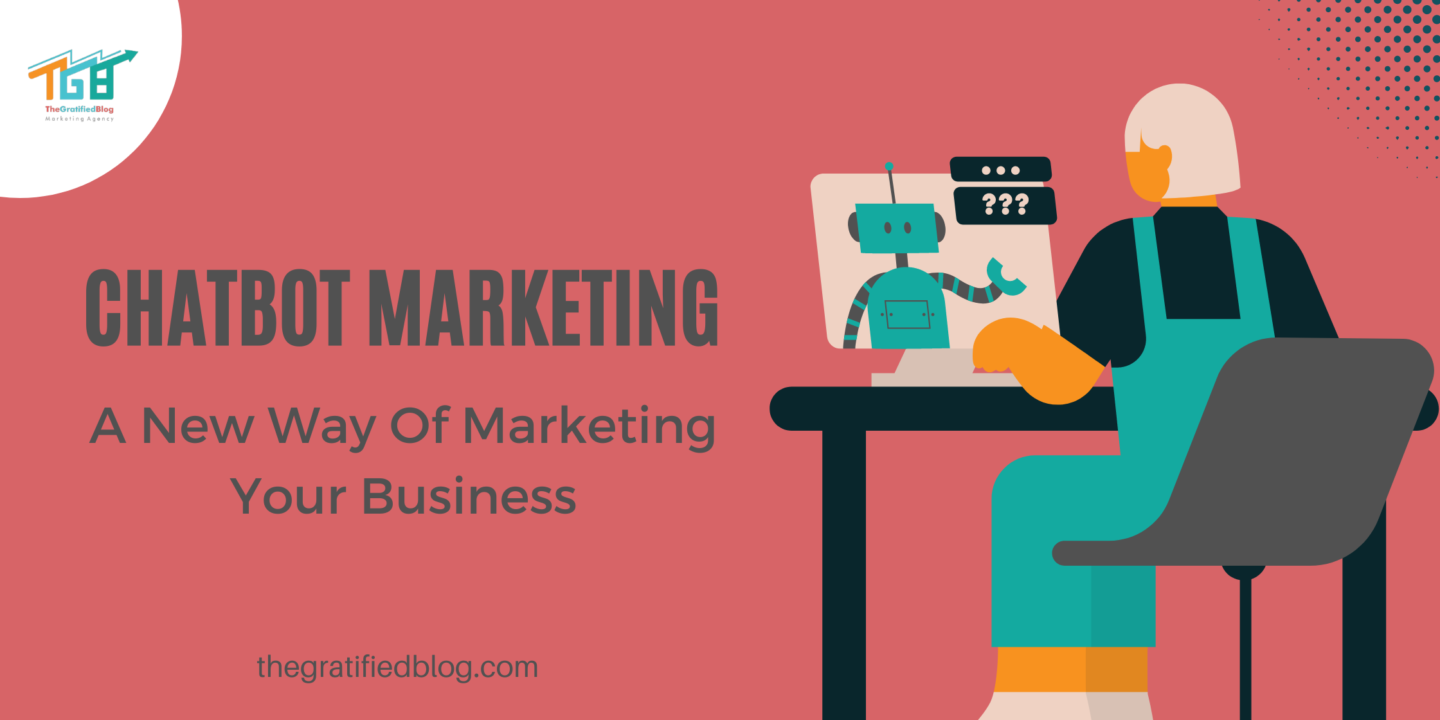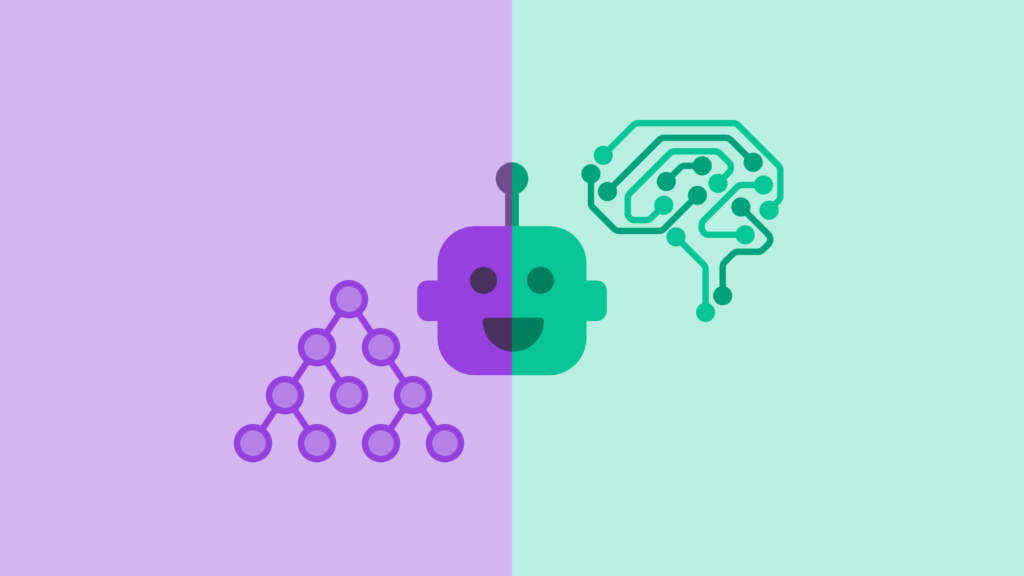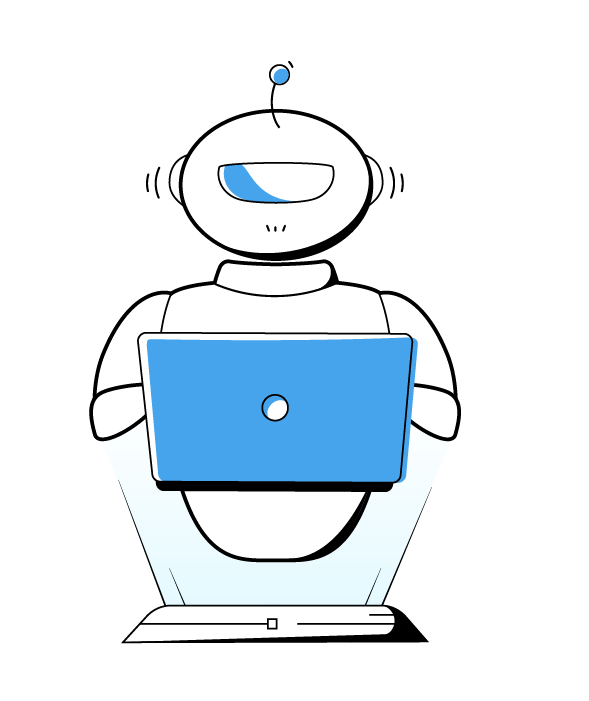
Chatbot marketing is a relatively new phenomenon, but it has already shown its potential to revolutionise how businesses interact with customers.
Chatbots have become a buzzword in digital marketing, and for a good reason. With the rise of instant messaging platforms, chatbots have become a new way of increasing business growth.
In this blog, we’ll delve into the concept of chatbot marketing, its benefits, strategies, case studies, and future possibilities. We’ll also explore the challenges and how businesses can overcome them.
By the end of this blog, you’ll have a solid understanding of how chatbots can help you achieve your business goals and improve customer engagement.
Let’s get started!
What Is Chatbot Marketing?
Digital marketing strategy involves using chatbots to interact with customers, generate leads, and drive sales.
Chatbots are automated messaging software that can communicate with customers and answer their queries.
They can also generate leads by collecting customer information and using it to create targeted marketing campaigns.
Chatbots can help drive sales by providing personalised recommendations and offers to customers based on their preferences and behaviour.
Many marketing automation tools, including HubSpot, ActiveCampaign, and SendinBlue, offer chatbot functionality.
These tools can help businesses automate their marketing efforts and improve their overall marketing strategy.
How Does Chatbot Marketing Work?
Chatbot marketing works by leveraging the capabilities of automated messaging software known as chatbots to interact with customers, generate leads and drive sales.
They are designed to simulate human-like conversations and use natural language processing (NLP) and artificial intelligence (AI) to understand and respond to customer queries.
When a customer interacts with a chatbot, the chatbot uses NLP to understand the customer’s query and provide an appropriate response.
This can range from simple FAQs to more complex interactions, such as helping customers complete a purchase.
It can also collect data on customer preferences, buying patterns, and behaviour, which businesses can use to improve their marketing strategies.
However, it can be integrated into various platforms, such as websites, social media platforms, and messaging apps.
For example, a business might integrate a chatbot into its website to help customers find products or answer their questions.
Alternatively, a business might use a chatbot on a messaging app like Facebook Messenger to send promotional messages or provide customer support.
Types Of Chatbots Used For Marketing
Chatbots automate various tasks in Chatbot Marketing and interact with customers in real time.
Different chatbots are used for marketing purposes, each with specific features and capabilities.
Here are some of the most common types of chatbots used for marketing:
- Rule-Based Chatbots
Rule-based chatbots, or scripted or decision-tree chatbots, use pre-defined rules to interact with users and respond to specific queries or requests.
These chatbots are ideal for handling simple, repetitive tasks such as answering frequently asked questions, scheduling appointments, and providing essential customer support.
They work by mapping out conversations like a flowchart to anticipate what a customer might ask and how the chatbot should respond.
Rule-based chatbots can use very simple or complicated rules but cannot answer any questions outside the defined rules.
They do not learn through interactions and only perform and work with the scenarios you train them for. In comparison,
AI chatbots that use machine learning understand the context and intent of a question before formulating a response.
Chatbots built for structured conversations are highly scripted, simplifying programming but restricting what users can ask.
They are commonly scripted to respond to frequently asked questions or perform simple, repetitive tasks.

Source: messengerpeople.com
- AI-Powered Chatbots
AI-powered chatbots use machine learning and natural language processing (NLP) to interpret user requests and provide more personalised responses.
These chatbots can learn from customer interactions and adapt their responses accordingly. They are ideal for handling more complex tasks such as product recommendations, personalised marketing messages, and customer retention.
Chatbots are software or computer programs that simulate human conversation or “chatter” through text or voice interactions.
They can converse with users and answer recurring questions, saving time and increasing efficiency.
As customers move away from traditional forms of communication, many experts expect chat-based communication methods to rise.
Chatbots can track how people respond to every answer they provide, continually analyse that information, and turn it into meaningful insights, as stated in.
They can also gauge the sentiment behind people’s words, detect and understand customer emotions, and provide appropriate customer care based on those insights.
Chatbots can automate many activities, such as responses to frequently asked questions or gathering customer feedback, which can significantly lower time constraints while reducing customer service costs, as mentioned in.
As stated, AI-powered chatbots can offer round-the-clock assistance, ensuring that customers receive support whenever they need it, regardless of time or day.
With ML algorithms, chatbots can continuously improve their responses and accuracy over time, as mentioned in

Source: ddi-dev.com
- Conversational Chatbots
Conversational chatbots are designed to interact with users using a human-like conversation interface.
They can understand natural language and respond in a conversational tone, making them more engaging and user-friendly.
These chatbots are ideal for creating a personalised customer experience and building brand loyalty.
They can deliver more relevant and personalised responses to users, making them feel more valued and engaged.
Chatbots use artificial intelligence (AI) to streamline and automate customer service operations, saving time and money.
They can handle routine customer queries, reducing the need for human customer service representatives and saving costs.
Chatbots can collect valuable customer inquiries, preferences, and behaviour data, providing insights to inform business strategies.
Conversational AI solutions can handle and resolve complex customer inquiries and provide support by leveraging advanced natural language processing (NLP) and AI algorithms.
As the technology continues to mature and improve, we expect more businesses to adopt AI chatbots as part of their customer engagement strategy.

Source: haptik.ai
- Voice-Activated Chatbots
Voice-activated chatbots are chatbots that can be interacted with through voice commands. They use voice recognition technology to understand user requests and provide responses.
These chatbots are becoming increasingly popular with the rise of smart speakers and virtual assistants such as Amazon Alexa and Google Home. Voice-enabled chatbots are the future of this technology.
Voice-enabled chatbots use spoken dialogue from users as input that prompts responses or creative tasks.
Developers can create these chatbots using text-to-speech and voice recognition APIs. Voice-enabled chatbots are changing the game by using pre-recorded answers and text-to-speech capabilities to address customer queries.
They help give the exact real-time and improvise the customer experience with your brand.

Source: chatbotsmagazine.com
- Hybrid Chatbots
Hybrid chatbots are a combination of rule-based and AI-powered chatbots. They can handle simple and complex tasks depending on the user’s needs.
These chatbots provide a more personalised experience while being cost-effective and efficient. They use pre-programmed rules to handle simple tasks and machine learning algorithms to handle more complex ones.
Hybrid chatbots combine the capabilities of both rule-based and AI chatbots, switching between predefined rules and AI-powered natural language understanding intelligently.
This hybrid approach balances flexibility and control, offering a more robust and adaptable chatbot experience.
Hybrid chatbots are designed to provide a versatile conversational and personalised experience.
They use a combination of machine learning algorithms and predetermined rules to respond to customer queries.
Hybrid chatbots leverage rule-based logic for straightforward queries and predefined scenarios while employing AI techniques for more complex or ambiguous user inputs.

Source: freshworks.com
Chatbot Marketing Benefits
They offer several benefits for businesses looking to increase customer engagement and improve their marketing strategies. Here are some of the top benefits of chatbot marketing:
- Cost-Effective Solution
They are a cost-effective solution for businesses looking to automate their marketing tasks and reduce customer support costs.
By using chatbots to handle simple and repetitive tasks such as answering frequently asked questions or providing essential customer support, businesses can save time and money while improving customer satisfaction.
- Enhanced Customer Engagement
They provide real-time customer interaction, enabling businesses to engage with their audience more effectively.
They can increase customer engagement and build brand loyalty by offering personalised recommendations, answering real-time queries, and providing targeted offers and promotions.
- Improved Lead Generation
Chatbots can help businesses improve lead generation by collecting and analysing customer data.
Businesses can effectively target their marketing efforts and generate more leads by gathering customer information such as email addresses and contact details.
- 24/7 Availability
They can be available 24/7, providing real-time customer support and assistance. This means businesses can respond immediately to customer queries and support outside business hours, improving customer satisfaction.
- Personalised Customer Experience
Collecting customer preferences and behaviour data can provide a personalised customer experience. This data can be used to offer targeted recommendations and promotions, improving customer satisfaction and increasing sales.
Chatbot Marketing Strategies
This can be an effective way to engage with customers, generate leads, and increase sales. To achieve these goals, it is essential to have a clear strategy in place.
Here are the steps to develop a successful strategy:
Identify Business Goals
The first step in developing a chatbot marketing strategy is identifying the business goals. Are you looking to increase sales, improve customer engagement, or generate leads?
Identifying the goals will help in defining the chatbot’s purpose and functionality.
Determine The Target Audience
After identifying the business goals, the next step is determining the target audience.
Understanding the target audience’s needs, preferences, and behaviours will help develop a chatbot that resonates with them.
Developing a chatbot persona that appeals to the target audience is essential.
Choose The Right Chatbot Platform
Once the goals and target audience have been identified, the next step is to choose the right chatbot platform.
Several chatbot platforms are available, including Facebook Messenger, WhatsApp, and Slack. Choosing a platform that aligns with the target audience’s preferences and habits is essential.
Develop A Chatbot Personality
Developing a chatbot personality consistent with the brand’s personality is crucial. The chatbot personality should be engaging, relatable, and friendly.
Remembering that the chatbot’s personality should align with the target audience’s preferences and behaviours is essential.
Create Conversational Content
The chatbot’s content is critical in engaging with the target audience. It is essential to develop conversational content that is relevant, informative, and engaging.
The content should be tailored to the target audience’s needs and preferences. It is also essential to have a clear call to action to guide the conversation toward the business goals.
Test And Optimize Chatbot Performance
Testing and optimising the chatbot’s performance is crucial in achieving business goals. Testing the chatbot’s functionality, content, and user experience is essential to ensure it meets the target audience’s needs.
Based on the feedback, the chatbot’s performance can be optimised to improve engagement, lead generation, and sales.
Use Data Analytics To Improve Marketing Strategies
Data analytics can provide valuable insights into the chatbot’s performance and the target audience’s preferences and behaviours.
It is essential to monitor and analyse the chatbot’s performance to identify areas for improvement.
The insights gained from data analytics can be used to optimise the chatbot’s performance and improve marketing strategies.
Future Of Chatbot Marketing
The future of chatbot marketing is bright, with continued growth and innovation expected in the coming years. Here are some of the trends and developments that are shaping the future:
More Personalized Experiences
Chatbots are becoming increasingly sophisticated in their ability to provide personalised experiences for customers.
As natural language processing (NLP) technology improves, chatbots can better understand customer needs and preferences, allowing them to provide more tailored recommendations and support.
Integration With Other Technologies
Chatbots are being integrated with other technologies, such as voice assistants and augmented reality (AR), to provide customers with more seamless and immersive experiences.
For example, a customer could use a chatbot to book a hotel room and an AR app to view the room before arrival.
Expansion Into New Industries
Many industries, including healthcare, finance, and education, are adopting chatbots. Chatbots will likely become more widespread as businesses seek ways to improve customer engagement and automate tasks.
Emphasis On Ethics And Transparency
As chatbots become more pervasive, there will be an increasing emphasis on ethics and transparency. Businesses must be transparent about using chatbots and ensure they are not used in unethical ways or violate customer privacy.
Final Thoughts
This blog has helped you understand chatbot marketing entirely. Then why don’t you implement a chatbot in your business and see what results it drives?
If you still need help understanding the topic, please leave your questions in the comment section. We will be happy to answer you.
Thanks for reading 🙂








No Comments